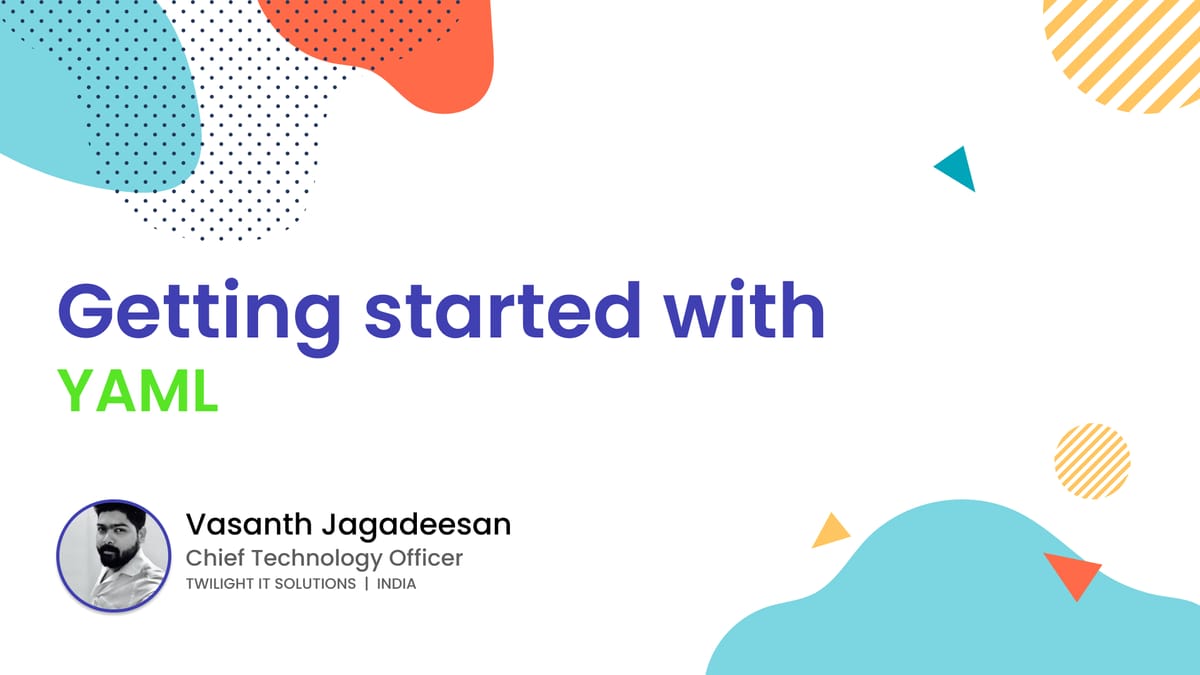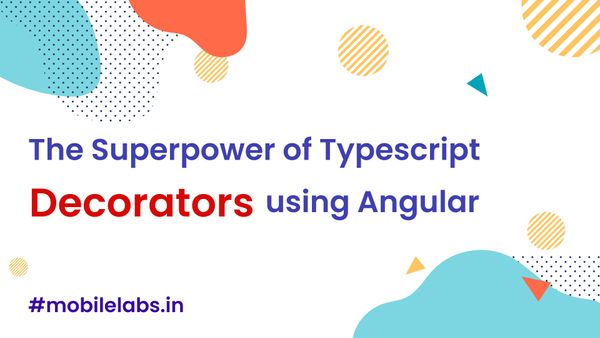Getting started with YAML
YAML is popular language for configuring the devOps tools. Learn how to use the YAML variables, YAML syntax and YAML validators.

Configuring the devOps tools and application. it is very important to understand the YAML variables, YAML syntax and YAML validators.
What is YAML
YAML is serialization language just like XML and JSON. it is used to define a standard data structure to transfer, most commonly used are YAML, JSON and XML.
YAML Ain't Markup Language
File extension
- .yaml
- .yml
In past years YAML popularity is increased so much its human readable and intuitive for writing configuration files like Docker, Kubernetes, and more.
services:
- name: mobilelabs
port: 8080
version: 1.0
YAML uses line separation and spaces with indentation. that's why is most human readable format of others(JSON, XML).
YAML Syntax
- Key Value Pairs
- Objects
- Lists
- Comments
- Booleans
- Multi line strings
- env vars
YAML Key Value Pairs
name: "mobilelabs"
port: 8080
version: 1.0
enable: true
YAML comments
# this exmaple comment in YAML
name: "mobilelabs"
# You can define the application port number here
port: 8080
version: 1.0
enable: true
YAML Objects
You can create object in YAML
service:
name: "mobilelabs"
port: 8080
version: 1.0
enable: true
This becomes an object with name, port, version and enable as its attributes.
Yaml is very sensitive to spaces, indentations it's always recommended to use YAML syntax validator.
VSCode extension: YAML
Online YAML Syntax Validator: YAML Checker
YAML Lists
services:
- name: "mobilelabs"
port: 8080
version: 1.0
enable: true
- name: "api"
port: 8081
version: 1.0
enable: true
- name: "api"
port: 8081
version: 1.0
enable: true
You can also define YAML list inline
services:
- name: "mobilelabs"
port: 8080
versions: [1.0, 1.1, 1.2]
enable: true
- name: "api"
port: 8081
versions: [2.0, 2.1]
enable: true
- name: "api"
port: 8081
versions:
- 3.1
- 3.2
enable: true
YAML Boolean
services:
- name: "mobilelabs"
port: 8080
version: 1.0
enable: true
- name: "api"
port: 8081
version: 1.0
enable: off
- name: "api"
port: 8081
version: 1.0
enable: yes
You can define YAML boolean in
- true or false
- on or off
- yes or no
YAML Multiline strings
When you have long multiline string like file contents you can define like this.
> will be used for considering the multi line string as single line
services:
- name: "mobilelabs"
port: 8080
version: 1.0
enable: true
token: >
eyJhbGciOiJIUzI1NiIsInR5cCI6IkpXVCJ9.eyJzdWIiOiIxM
jM0NTY3ODkwIiwibmFtZSI6IkpvaG4gRG9lIiwiaWF0IjoxNTE
2MjM5MDIyfQ
| will be used for considering the multi line string just like file.
services:
- name: "mobilelabs"
port: 8080
version: 1.0
enable: true
token: |
You can define a file
with multiple line
this will be consider as multiple lines.
Using Environment Variable in YAML
You can use the host machine environment variable inside the YAML file.
export MYSQL_PASSWORD=password
services:
- name: "mobilelabs"
port: 8080
version: 1.0
enable: true
DB_PASSWORD: ${MYSQL_PASSWORD}
YAML Placeholders
You can define YAML template file using placeholders and it will be replaced with dynamic values using template generators.
service:
name: {{ .Values.service.name }}
port: {{ .Values.service.port }}
version: {{ .Values.service.version }}YAML file with multiple documents
YAML supports defining multiple documents in single file using `---` as separator.
version: v1
services:
- name: "mobilelabs"
port: 8080
version: 1.0
enable: true
DB_PASSWORD: ${MYSQL_PASSWORD}
---
version: v2
services:
- name: "mobilelabs"
port: 8080
version: 1.0
enable: true
DB_PASSWORD: ${MYSQL_PASSWORD}
Conclusion
YAML is used in most of DevOps tools, its good to deep dive about YAML.
I personally prefer YAML over other languages, If you like the article please share.
Happy coding and thank you for reading this tutorial.




